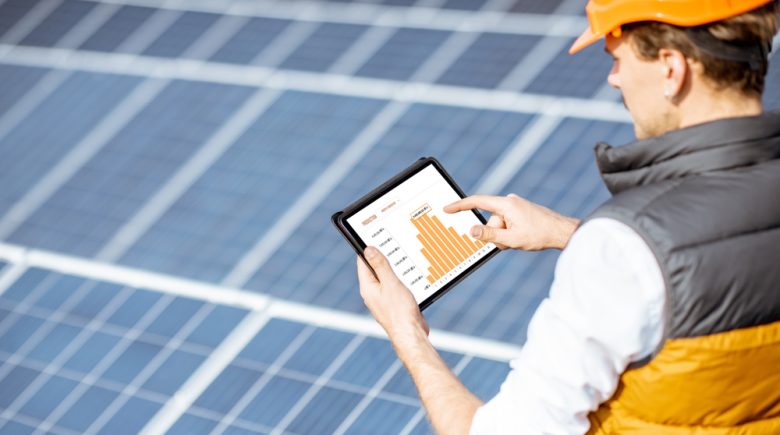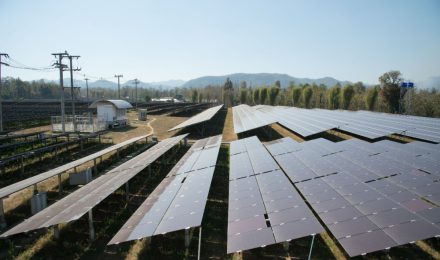Information gathered from Earth monitoring is necessary for efficient, environmentally responsible energy development, production, and transport. Unique, unbiased information is offered by the products and data for satellite remote sensing, which also have the benefit of producing uniform, repeated, and worldwide coverage. While there is a lot of room for growth, there has already been a lot of usage in the energy sector for things like climatology and locating wind and solar energy sources. This blog identifies pertinent products and data for remote sensing focused on science resources from NASA Earth. The article gives examples of the importance of Earth observations. It analyzes the essential systems in the energy sector that have the potential to gain from new satellite remote-sensing data applications.
The examples from NASA data satisfy the informational needs for solar energy. Because they offer the best-demonstrated promise for new or extended applications, this study focuses on renewable energy (particularly biomass, wind, and hydropower), modeling for energy long term, and forecasting load. This report concentrates on solar power, even if further research is needed to back it. The evolving GEOSS environment and a more comprehensive framework for the integration of decision-support systems and satellite remote sensing for the energy sector are covered in this study.
The US economy and ecology depend on effective energy resource management. In a broader sense, it is for sustainable development and decreasing global poverty. Resolving concerns with environmental preservation, economic advancement, and human health, among other things, will be easier with the availability of affordable, dependable, and giving global population energy supplies. Energy management includes a variety of tasks, including the creation and utilization of renewable energy sources. It involves the exploitation, discovery, movement, and refinement of nuclear energy resources and fossil fuel resources. It also includes the production and distribution of gasoline and electricity. Energy management encompasses every aspect of energy use and efficiency, models and predictions required for effective energy resource planning, operation, and regulation, emissions evaluation, and adaptation and mitigation to climate change.
The importance of employing this data for significant decisions or research in several sectors, such as the climatology data to estimate the demand for energy and the appraisal of wind and solar radiation resources, is already acknowledged by regulators and energy managers. Remote Earth observation sources measure an expanding spectrum of geophysical parameters. The associated models and analysis tools are developing quickly. Earth science resources based on satellites offer unique, objective data. Additionally, they create repeating, homogeneous coverage across the entire world. More precise weather information and data particular to the energy sector, such as the direction and speed of the wind, are increasingly needed as energy technology advances.
Due to the globalization of energy technology, particularly in underdeveloped nations, climate data is necessary to fill in spatial information gaps and provide consistent information across international boundaries for the planning and operation of energy projects. The IEA aims to make these resources accessible to the general public and companies. Solar energy applications have had a lot of success with estimates of solar resources up to this time. The specific examples provided in this article demonstrate how the energy management business has the potential to profit from the expanding usage beyond solar energy applications.
Organizations in the public, non-public, and commercial energy sectors that manage and maintain decision-support systems may benefit from new or increased integration. They use data from satellite-based remote sensing. These technologies are utilized for various purposes, from government agency review of energy strategies for regulations and policies to short- and long-term forecasts by electric utilities. Given the demand for the energy sector applications of satellite remote sensing, this post is a case study highlighting the scientific capabilities of NASA. Another similar case study may focus on the scientific capabilities of other key space agencies, like the European Space Agency.
Let’s examine the areas of energy management data. The following three key areas of focus are:
• Wind, biomass, and hydroelectricity are examples of renewable energy
• Load forecasting
• The modeling for long-term energy and the climate changes impact
The organizations and systems in the energy sector for each location that will benefit the most from cutting-edge uses of satellite data are highlighted, along with a brief overview of the urgent issues at hand. In addition to identifying pertinent products and data that focus on resources from NASA, we provide specific examples of Earth observation data that energy sector organizations have or the benefits based on ongoing prototype demonstration projects. The challenges of parameterization and postprocessing to transform data in the developmental stages of the GEOSS are discussed. These challenges include incorporating satellite remote sensing into decision-support tools for the energy sector.
There are currently problems with biomass, hydroelectric renewable energy, and wind. Renewable energy sources are naturally renewing but flow-limited, such as:
– Wind
– Biomass
– Hydropower
– Solar
– Geothermal
– Ocean thermal
– Wave action
– Tidal action
One of the renewable electricity generation sources with the quickest growth is wind energy on a global scale. In the United States, wind energy produced nearly 50% of all renewable energy in 2006. The operation and placement of installations for wind power offshore, notably in the United States, have challenges like wind energy forecasts, integrating wind energy into the grid, and developing wind energy technology for lesser wind resource locations.
There, the wind and wave forces are more powerful. Biomass and hydroelectricity show promise for creative uses of Earth observation datasets. There are about 75,000 dams in the United States, and 3% produce hydroelectric power. The United States has a total hydroelectric capacity of 103.8 GW with pumped storage, representing 8% to 12% of the country’s energy production. Hydroelectricity generates 20% of the world’s electricity. The United States has significant reservoirs, and hydroelectricity is a reliable energy source. However, environmental understanding is required to operate and renew these facilities’ licenses.
Transforming satellite remote sensing data and model outputs into information that users would find helpful is a critical component of integrating them into decision-support systems for the energy sector. Energy stakeholders may find that processed data from a single sensor or a group of sensors is helpful in some circumstances. Sensors may not always be able to offer the necessary temporal and geographic averaging; as a result, the output of models may be a more suitable completed well for use by energy stakeholders. The likelihood of future events is estimated using climatological data sets as a proxy.
A suitable framework is necessary for it to have any chance of helping with energy management. This case study emphasizes the necessity of fostering closer ties between the energy sector and organizations focused on satellite remote sensing. It also shows the energy sector’s need for project prototyping to identify the precise parameter needs and postprocessing requirements. Energy sector decision-makers can direct the creation and availability of data if energy industry organizations are involved early in the satellite product development process.
Transforming satellite remote sensing data and model outputs into information that users would find helpful is a critical component of integrating them into decision-support systems for the energy sector. Stakeholders may find processed data from a single sensor or a group of sensors helpful in some circumstances.



